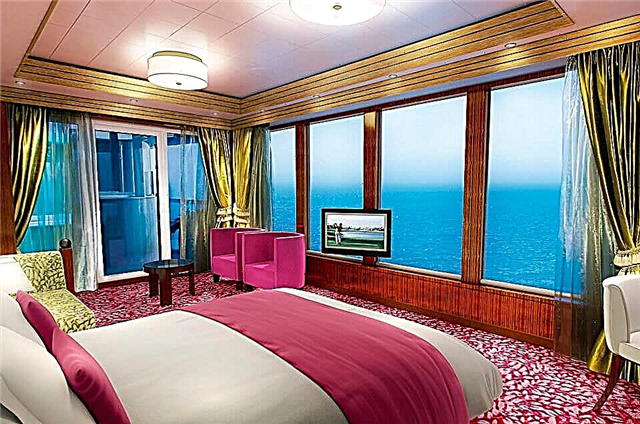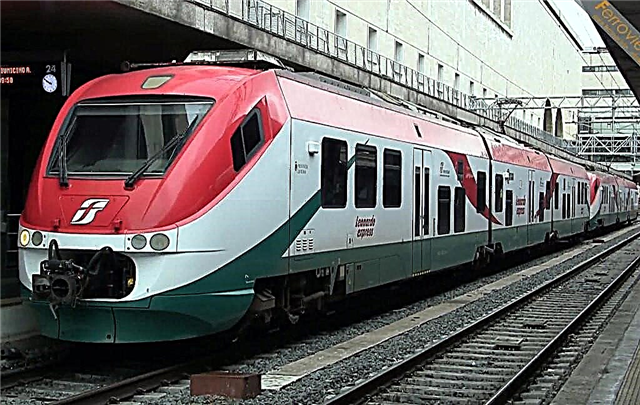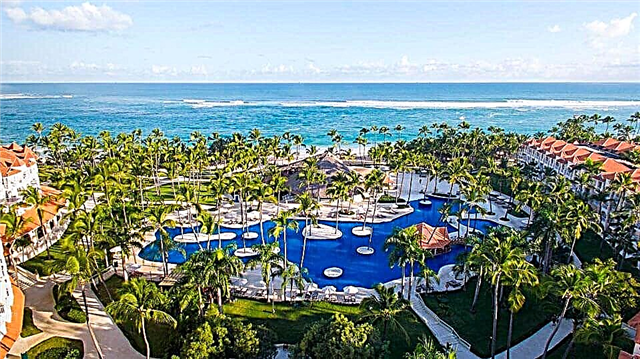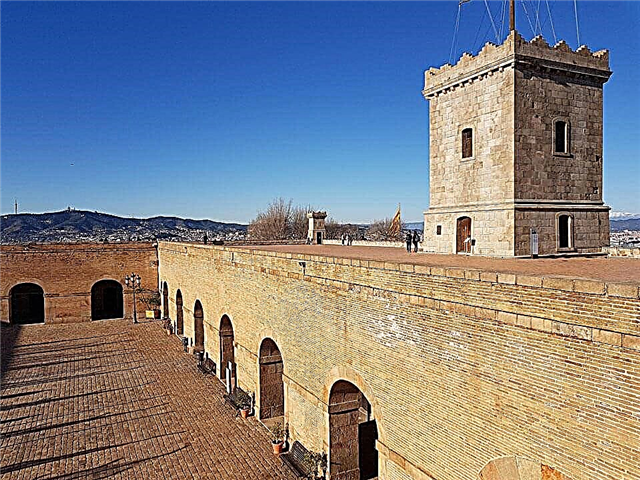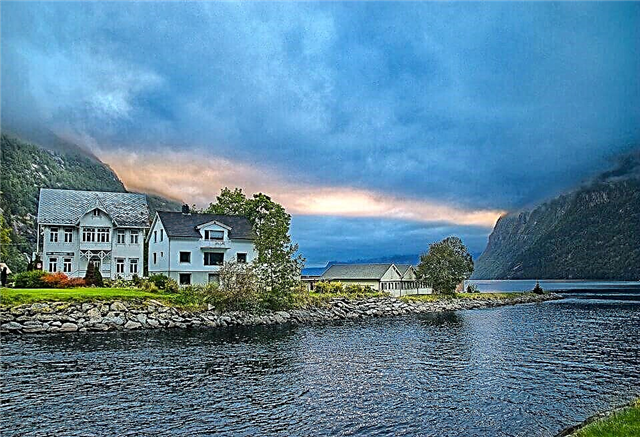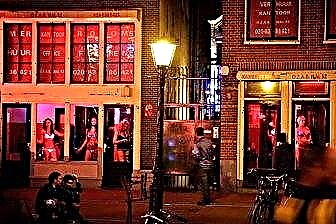Amsterdam is very different and cannot be described in just a few words. Each tourist comes here for something of his own and it is this "his" that he finds. Contrary to popular beliefs of many foreigners, the city boasts not only world-famous coffee shops and the Red Light District. Such great masters of the brush as Van Gogh and Rembrandt, as well as other representatives of the Flemish school of painting, one of the best in Europe, lived and worked here.
Moreover, Amsterdam is the famous floating flower market "Bloemenmarkt", luxurious neighborhoods covered with a network of canals, cheerful Dutchmen on bicycles in any weather and a completely unique atmosphere of freedom. True, very often freedom crosses the border of permissiveness, but this is exactly what it is - Amsterdam.

The best hotels and hotels at affordable prices.
from 500 rubles / day
What to see and where to go in Amsterdam?
The most interesting and beautiful places for walking. Photos and a short description.
Rijksmuseum
A huge art museum that stretches along the embankment of one of the canals for a whole block. The museum's expositions tell about the history of art in the Netherlands. The most important place is given to painting. Most of the museum's collection consists of paintings that were created in the territory of Flanders (Southern Netherlands) and the Northern Netherlands. Collecting paintings for the Rijksmuseum began in the 19th century.

Keukenhof
National flower park near Amsterdam. Every year this amazing place opens for just a couple of months - for the flowering period. Hundreds of varieties of tulips, daffodils, lilies, hyacinths, rhododendrons and other types of flowers grow here. The alleys of the park are painted in all possible shades. Keukenhof reminds many tourists of a "paradise", from which they do not want to leave at all.

Canals of amsterdam
The total length of the network of canals within the city is about 75 km, there are 165 waterways in total. Only small pleasure boats and private boats run on them. More than 1,500 bridges of various sizes connect the canals to each other. The very first channel was dug in the middle of the 15th century and was used as a city moat. Now it is one of the main canals of the city called Singel.

Meyderslot Castle
This austere Romanesque fortress of the 13th century has survived to this day in almost its original form. The thing is that in the Middle Ages it was used as a customs point, and not as a military fortress, so it was never besieged. There is a legend about the ghost of Count Floris V (one of the former owners of the castle), who still wanders the dark corridors. The Count was betrayed and killed by his own vassals, and his spirit finds no peace.

Royal Palace
The official residence of the royal dynasty of the Netherlands, where official events are held: accession to the throne, weddings, receptions of foreign delegations. The palace was erected in the 17th century for the needs of the city hall and for court sessions, but was later transferred to the jurisdiction of the monarchs. The structure rests on a foundation, which in turn is reinforced on 13660 piles.

Dam Square
The central square of Amsterdam, located on the dam of the XIII century. It is known that a third of the area of the Netherlands is below sea level. For the construction of houses, streets and communications, the Dutch hundreds of years ago built dams and drove piles into fragile soil. "Dam" in translation from Dutch means "dam". Over time, the square became the commercial center of Amsterdam, for a long time a stock exchange functioned here.

Madame Tussauds museum
A branch of the famous exhibition of wax figures, located in Amsterdam (there are 19 branches in the world). Madame Tussauds has gained popularity in all corners of the world. Here you can admire the exact copies of real and fairy-tale characters, made with precision and great skill. Madame Tussauds herself was an extraordinary and restless person. She has devoted her entire life to the collection.

Vincent Van Gogh Museum
A museum that tells about the work and life of one of the brightest representatives of Dutch painting. In addition to the works of Maestro Van Gogh himself, canvases by Monet, Gauguin, Picasso, Seurat are exhibited here. The path of the artist was short, difficult, but very productive - he began to paint after 30 years and created more than 800 paintings, until he shot himself at the age of 37. The museum was founded in 1973.

Rembrandt House Museum
The museum is organized in the house on Jodenbreestraat street, where Rembrandt lived for some time. The collection includes 260 engravings by the master, paintings by his students, as well as those artists who were influenced by the work of Rembrandt. The museum was opened in 1911 in the presence of the reigning queen. The exhibits came from gifts from private collectors and the purchase of works at auctions.

Shipping Museum
The Dutch have always been considered skillful and courageous sailors. Their life has been associated with the sea since the first settlements in the Netherlands. The history of the development of navigation and shipbuilding can be found in the special Museum of Shipping, where collections of maps, ship gear and tools are exhibited. Before the opening of the museum, the building housed the Admiralty of Amsterdam.

NEMO Museum
A modern interactive museum, where the achievements of modern technologies are widely used. It was created in 1997 with the aim of demonstrating to people the relationship of art, science and nature. Complex physical phenomena are presented here in an accessible form. Visitors are allowed to independently conduct experiments, set up experiments in order to understand the essence of a particular phenomenon.

Amsterdam City Museum
Gallery containing an impressive collection of contemporary art. The first building (old) was built in 1895. The status of the State Museum of Contemporary Art was obtained in 1938. After 1973, part of the collection was moved to a new building. In the gallery you can admire paintings by Cubists, Fauves, Expressionists and Impressionists. It contains 29 paintings by K. Malevich.

Diamond factory
One of the oldest diamond cutting factories, established in the middle of the 19th century. There is a museum with her, where you can get acquainted with precious exhibits. Among the curious items are diamond skulls by British craftsman Damien Hirst, a $ 1 million gold tennis racket, a copy of Van Gogh's Starry Night, decorated with several hundred diamonds, and a queen's crown.

Anne Frank House Museum
Memorial house of the Jewish Frank family, who suffered from the Nazis during the Second World War. This is an old mansion of the 17th century, where Otto Frank, who emigrated from Germany, found a temporary refuge. Anna was his daughter. All the time that the family was hiding in the house, the girl kept a diary. The recordings were published in 1947, after which the public became interested in the site.

Church nieuweckerk
The name of the temple is deceptive (translated from Dutch "nieuweckerk" means "new church"), since it is a construction of the XIV-XV centuries. Under the arches of the church are buried representatives of the ruling family of the Nasau-Orange, as well as famous military, cultural and political figures. The structure is crowned with a spire over 100 meters high. Lightning struck him twice, causing a fire and damage to the temple.

Oudekerk Church
The oldest temple in the city from the beginning of the XIV century ("old church" in translation from Dutch). Over the centuries, the church has been raided by robbers and religious fanatics more than once, but the original stained glass windows, murals and ceiling have survived to us. At the end of the XVI century.Protestants took the church for themselves and began to hold services according to their own rite. Nowadays, organ concerts are regularly held on the territory, where an antique organ of 1658 sounds.

Church Westerkerk
Protestant temple of the 17th century. It is famous for the fact that Rembrandt was buried here in a common grave for the poor. The bell tower is decorated with a stone copy of the crown of Emperor Maximilian I (the same crown is depicted on the coat of arms of the Netherlands). It is believed that the ruler allowed his crown to be placed on the spire in gratitude for a cash loan given to him by local bankers.

Church of St. Nicholas in Amsterdam
Saint Nicholas is the patron saint of the capital of the Netherlands. He also protects all sailors, traders, travelers, and fishermen. It was in honor of this saint that a Catholic church was erected, which later became the decoration of Amsterdam. Unlike numerous Protestant churches with more austere architecture and interior design, St. Nicholas Church looks more ornate.

Weighing Chamber
Former 15th century city gate, which once housed the town hall, museum, theater and depot. From the 17th to the 19th centuries here the city weighing chamber worked, in which the reference weight of goods was determined. For Amsterdam, this institution played an important role, since by that time the city was already a major center of European trade. Representatives of various professional guilds were located on the upper floors.

Coin tower
The structure, preserved after the fire at the city gates of Regulirspourt at the beginning of the 17th century. As a result of the restoration, 4 hour dials were reinforced on the facade and an octagonal spire appeared at the top. The tower houses a corillon (a bell system that acts as one musical instrument) of 38 bells. The bell rings once a week on Saturdays. At this time, you can hear a real "concert".

Berlage Exchange
The Art Nouveau building, which at the beginning of the 20th century served as a stock exchange, and nowadays hosts various meetings and conferences. The architecture of the Berlage exchange served as a model for other buildings erected in a similar manner. Its creator Hendrik Petrus Berlage is the creator of the original architectural style. He brought national elements and his author's conceptual vision into traditional modernity.

Stadium Amsterdam-Arena
Home stadium of the Dutch football club "Ajax". The arena was opened in 1996. More than 140 million euros were spent on the work. At the time of construction, this stadium was considered the most progressive in the world, as it had a retractable roof. The Amsterdam Arena is also used for concerts, during which about 70 thousand spectators fit into the stands. It also hosts an annual electronic music festival.

Amsterdam defensive line
A military defensive line consisting of 45 forts and many hydraulic structures. It was erected at the turn of the 19th and 20th centuries to protect Amsterdam from a military threat. If the trigger mechanisms were activated, then within an hour and a half the lowlands around the city could quickly fill with water. In 1996, the defensive line was included in the UNESCO heritage list.

Artis Zoo
The zoo, founded at the beginning of the 19th century, is considered one of the best in Europe. To date, it contains several thousand animals. On a huge territory there is a botanical garden, aquariums, a geology museum, a planetarium. Most of the animals live in open enclosures, which are separated from visitors by moats (that is, the most natural habitat conditions have been created for them).

Vondel park
Landscaped green area, adapted for recreation, walking, cycling and picnics. There is a cinema museum and a summer theater on the territory of the park. Vondel Park is open 24 hours a day, admission is free for everyone. Locals love this place for its silence, serenity and the opportunity to isolate oneself from the hustle and bustle of noisy and crowded Amsterdam at least for a while.

Zanse Schans
An open-air museum exposition, where a typical Dutch landscape has been recreated - mills, village houses, a farm, craft workshops, where they still work according to old technologies. From all over the country, 30 types of real Dutch houses were transported here. In the village of Zanse Schans, there are real residents who are in the constant focus of attention of numerous tourists.

Floating flower market
This attraction is only in Holland. The market operates on one of the main Singel canals. Its history dates back to the 17th century, when boat traders began to offer passers-by to buy flowers. Now the barges are moored to the shore and do not sail anywhere, but the flower fair continues to be called "floating". Here you can buy any flowers, tulip bulbs, seeds and souvenirs.

Flea Market Waterlooplein
A small "flea market" next to the city hall, where they sell all kinds of rarities. Here you can find original clothes, African jewelry, products of young unknown designers, books and souvenirs. The regular customers of the market are collectors, directors, costume designers, as well as numerous "freaks" in search of something as shocking as possible.

Coffee shops in Amsterdam
In the Netherlands, soft drugs are legalized and there are even special places where they can be used - these are world-famous coffee shops. A large part of tourists aspires to Amsterdam precisely for the sake of going to such establishments. They offer hashish, marijuana and other drugs, but alcohol is prohibited. There are several hundred coffee shops in Amsterdam, and there are enough customers for everyone.

Red light district
A quarter inhabited by "priestesses of love" who live and work here absolutely legally. Moreover, they pay decent taxes to the city treasury. Prostitution in Holland has been legalized for a long time, local "prostitutes" have a trade union and a powerful system of social guarantees. The Red Light District is home to countless sex shops, erotic shows and related museums.


